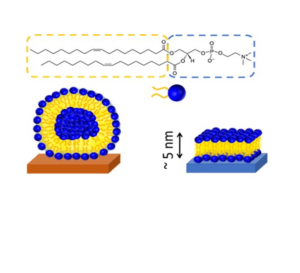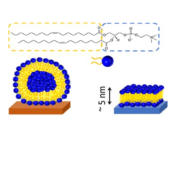Lipid Bilayers New Application Note
May 15h 2020: AWSensors is pleased to announce the release of its new Application Note on Supported Lipid Bilayers (SLB) entitled “Supported Lipid Bilayer formation followed at low- and high-fundamental frequencies“.
Summary of the Note
The process of supported lipid bilayer (SLB) formation from adsorbed liposomes is a robust biophysical system that is used in laboratories all over the world. Here, it is used to test AWSensors Quartz Crystal Microbalance with Dissipation measurement (QCMD) equipment and high fundamental frequency QCMD sensors. It is shown that the AWSensors QCMD system correctly and quantitatiely reports the frequency and dissipation changes associated with the SLB formation on high- and low-fundamental frequency SiO2-coated sensors. Some differences between the two types of sensors are highlighted. 
Introduction
Quartz crystal microbalance with dissipation measurement, or QCMD, has become a popular technique for research in such disparate fields as material science, biophysics, electrochemistry, and immunosensing. [1] One of the reasons for the wide range of applicability and popularity of QCMD is its ability to provide information about molecular organization (topology and geometry) at solid/liquid interfaces. Specifically, it was shown how the combination of frequency and dissipation could distinguish between different surface-immobilized lipidic assemblies: adsorbed liposomes and supported lipid bilayers (SLBs; Figure 1).[2] This allowed the process of SLB formation from liposomes on SiO2-coated QCMD sensors to be followed in situ.[2] Subsequent studies further showed how the combination of frequency and dissipation measurements on various overtones could be used to study adsorbed liposome deformation [3,4] and detect mutations through the analysis of DNA conformation and length. [5, 6]
Continue reading downloading the full Application Note (below) …
Download Full Application Note
You can download the full Application Note in pdf file from this link or download it from our Applications Web Page where you can find this and the rest of our Application and Technology Notes.



